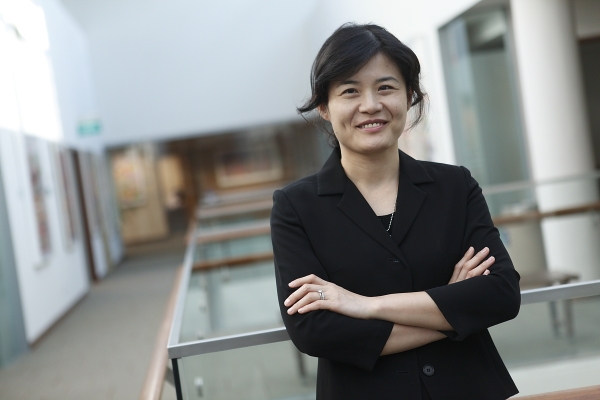
By Jovina Ang
SMU Office of Research & Tech Transfer – The GATT (General Agreement on Tariffs and Trade) and WTO (World Trade Organisation) came into force respectively in 1948 and 1995 with the primary purpose of liberalising trade and reducing trade barriers across the world.
Speaking to the Office of Research & Tech Transfer, Associate Professor of Economics Chang Pao Li said: “The member states of the GATT/WTO contributed to 84 percent of world trade in 1950 and 98 percent in 2015. Given the prominence of the GATT/WTO and their influencing policies, it is imperative that we understand in detail how these institutions induce effects on bilateral and multi-lateral trade flows of the member states.”
She continued: “Until now, research on the aggregate welfare and distribution effects of the GATT/WTO has been limited to recent decades or snapshots of certain negotiation rounds. In addition, most studies have focused only on tariff reductions facilitated by the institutions – which were among the reasons why we wanted to embark on this important research.”
“We wanted to take the opportunity to ascertain the comprehensive effects of the GATT/WTO trading system for its entire history; by not only taking into account the impact of tariff reductions but also, changes in variable and fixed trade costs due to non-tariff trade-related policy liberalisation,” she added.
To conduct this research project, Professor Chang teamed up with her former Ph.D. students who are now Assistant Professors in China. Wei Jin is based at Nankai University, and Kefang Yao, has an appointment at Hunan University.
The research was a part of four related projects on the GATT/WTO trading system funded by a Ministry of Education Academic Research Fund (AcRF) Tier 2 grant.
The research
The research was designed to understand the yearly welfare and distribution effects of the GATT/WTO for up to 180 economies from 1950 to 2015. It also delved into the analysis of two important issues related to the system:
- Did the GATT/WTO improve or worsen the cross-country income disparity?
- Did the provision of preferential trade agreements (PTAs) facilitate or inhibit multi-lateral trade liberalisation?
An important step that was taken by the research team was to develop a theory-founded structural framework, to estimate and quantify the effects of GATT/WTO on trade flows and welfare.
Specifically, the Melitz framework was generalised to include trade barriers consisting of tariffs in addition to variable and fixed trade costs, intermediate inputs in the production and entry process, and trade imbalances.
The research adopted non-parametric matching estimators to identify the direct effects of GATT/WTO membership status (of the bilateral trading country pairs) on trade flows.
The identified trade effects were mapped to underlying changes in tariffs, and variable and fixed trade costs. These inputs, when coupled with information on tariff data (factual versus counter-factual had GATT/WTO not existed), allowed the research team to use the structural framework that was developed, to simulate the comprehensive welfare effects of GATT/WTO.
The need to compile factual tariffs and to impute counter-factual tariffs (the non-cooperative tariffs that countries would impose in the absence of GATT/WTO) posed great challenges in implementing the quantitative analysis. Subsequently, the research team were led to:
- Propose an algorithm to impute the non-cooperative tariffs based on the tariffs the country imposed before joining GATT/WTO (if available) and the tariffs the country imposed against non-members;
- Demonstrate that focusing on tariff changes alone, under-stated by a large margin the full extent of trade liberalisation and the full welfare effects of GATT/WTO for the period 1988–2015 when such tariff compilation was feasible; and
- Show that by using the identified direct trade effects of GATT/WTO membership indicators (which reflected the effects of changes in tariffs and trade costs on trade) as inputs in the same structural framework but ignoring the tariff revenues in income, generated quantitative effects with similar magnitudes as the full welfare effects for the period 1988–2015 when compilation of tariffs was feasible.
Given the observations, the research proceeded with the main analysis based on the approximation approach that ignored tariff revenues in income but nonetheless, captured the impact of changes in tariffs on trade flows.
In so doing, it eliminated the need to impute tariffs (factual or counter-factual) and avoided the potential caveats and errors surrounding the imputed tariffs, which in turn, allowed the analysis to be extended to the entire history of GATT/WTO for all economies in the period 1950–2015.
Research findings
Trade Liberalisation and Improvements in Income Disparity
The research analysis showed that there was a robust pattern of welfare gains for the member states of the GATT/WTO, which suggests that GATT/WTO has been effective in promoting trade liberalisation through the reduction of trade barriers.
In the first 30 years of the GATT, the non-member states did not experience welfare loss but benefited from the extension of lower trade barriers from members to non-members.
However, after 1980 when the trade policies of GATT/WTO members became distinctively divergent with respect to the membership status of the trading partners, non-member states started to experience welfare losses due to their lack of market access.
In the absence of GATT/WTO, the global income disparity across countries would have been larger, with this effect becoming increasingly more pronounced after 1995. This suggests that GATT/WTO has been effective in moving the developing and poorer nations up the ladder of livelihood, and effective in reducing cross-country income disparity.
Another important finding pertains to the geographical distribution of welfare effects. It was found that disproportionately larger gains were seen to be accruing in Europe and Asia.
Preferential Trade Agreements
Preferential trade agreements (PTAs) were found to be complementary with the multi-lateral liberalisation policies for the GATT/WTO members, as the member states’ welfare gains were larger with the presence of the PTAs.
The welfare losses of non-members by staying outside the GATT/WTO system were, however, alleviated with the access to the PTAs. This implied that the relief offered by the PTAs could reduce the non-members’ incentives to participate in the GATT/WTO. Thus, in this perspective, PTAs could also inhibit and become stumbling blocks for multi-lateral trade liberalisation.
As there are more than 700 PTAs signed on a bilateral, regional or cross-regional basis (with 350 of them in force), there is an opportunity for future GATT/WTO negotiations to streamline the provisions of PTAs under the GATT/WTO to maximise their potential benefits.
Implications to global trade
In summing up her findings, Professor Chang said: “The research confirmed the positive influence of the GATT/WTO institutions in raising the real income of the member states and reducing cross-country income disparity.”
Back to Research@SMU August 2022 Issue
See More News
Want to see more of SMU Research?
Sign up for Research@SMU e-newslettter to know more about our research and research-related events!
If you would like to remove yourself from all our mailing list, please visit https://eservices.smu.edu.sg/internet/DNC/Default.aspx

